Bess Beller-Levesque, community organizer with Toxics Action Center, and JOIN alum from 2012-2013, this March organized the 27th annual Local Environmental Action Conference, a day-long day of training on environmental organizing, which brought together 325 people from all across New England. The conference at Northeastern University featured a keynote address from Robin Chase, the co-founder of ZipCar, and workshops on topics ranging from environmental justice to local food and the new sharing economy. Here she presents an award to two Public Health experts recognized for their work during the conference’s award ceremony. 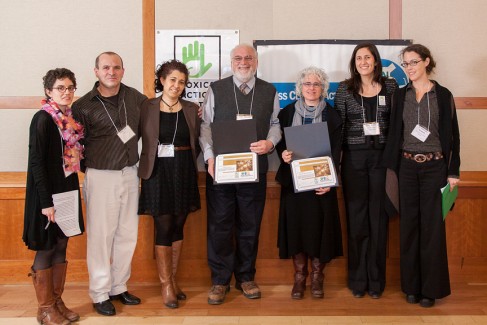
Building community with JOIN for Justice
By Rabbi Adam Baldachin
Having recently graduated from the Jewish Theological Seminary, working as a pulpit rabbi comes with its challenges. I find myself often doing things I had previously only seen mentors do or even just heard about or imagined myself doing. Since the summer, I have developed and ran community programs, offered performance reviews to employees, organized a task force to develop a new initiative, and utilized the passionate visions of the membership.
Despite my lack of experience, it is my skills as a community organizer which have been utilized in almost every part of the job. As a rabbinical student, I participated in a seminary leadership course with JOIN for Justice, taught by Meir Lakein. Among other skills I learned, I developed the ability to lead a community by focusing on the development of people and how to help my community develop a common mission and act on it.
One of the challenges I have experienced in implementing some of my ideas as an organizer is finding the time and venue to teach the organizing skills to my lay leaders. Having advocates and leaders of an organizing initiative makes it much easier to accomplish. Luckily, JOIN recently paired up with SYNERGY, and UJA- Federation of NY and co-presented alongside Dr. Ron Wolfson, author of Relational Judaism and leaders from local synagogues to share strategies for building strong communities that prioritize interpersonal connections over transactional interactions.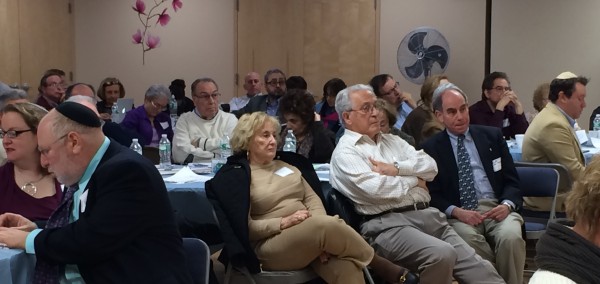
These trainings took place on Sunday and Monday, February 23-24, 2014 in three different venues, including in Westchester, at Beth El Synagogue Center, on Long Island at Mid-Island Y JCC, and in Manhattan at UJA-Federation. Dr. Wolfson first led a discussion about transforming our synagogues into relational and welcoming communities. We shared and were inspired by ideas to show our congregants we care and shared best practices for how to engage participants in a relevant and meaningful way that draws on their skills and passions.
From there, we were took part in a training led by Jeannie Appleman, the Seminary Leadership Project Founder and Trainer. Jeannie told her story, explaining how she entered into the world of organizing and where her passions lay. She then taught us the benefits of organizing a community and how to lead a parlor meeting.
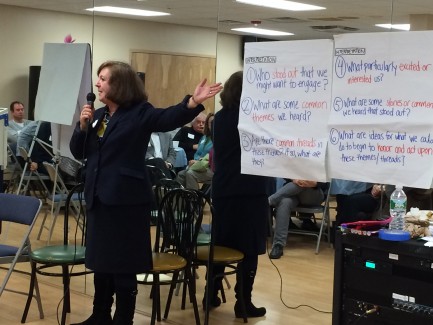 We then broke into individual groups, each meeting with about eight participants, comprised of a facilitator, a note taker, and time keeper, and shared with one another a time when we took a risk. Even without knowing each other beforehand, the members of the group opened up to each other about difficult moments they faced and the choices they made which greatly impacted the journeys of their lives.
We then broke into individual groups, each meeting with about eight participants, comprised of a facilitator, a note taker, and time keeper, and shared with one another a time when we took a risk. Even without knowing each other beforehand, the members of the group opened up to each other about difficult moments they faced and the choices they made which greatly impacted the journeys of their lives.
The personal stories transformed our group from a class on how to run a parlor meeting to a powerful experience of sharing who we are in a deep way and empowering us to recreate the experience elsewhere. Each participant left the training prepared to bring the passion and the rules of implementation to their communities. As a facilitator, I was thrilled to help to create a meaningful dialogue with new friends, and I left, my own passions rekindled to connect with my congregants on a deeper level and to inspire those conversations between all members of my community.



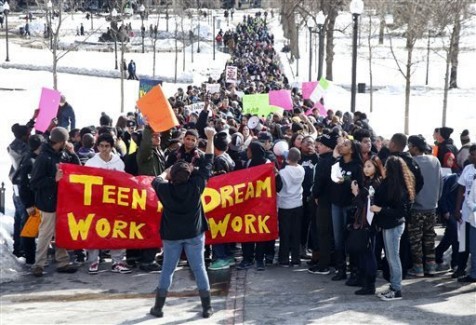
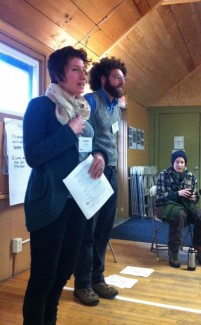 What is the purpose of a community garden? A few weeks ago, I would have said that I knew the answer to this question: that a community garden’s purpose is to nourish people with healthy food and to subvert a corrupt system by providing an alternate model.
What is the purpose of a community garden? A few weeks ago, I would have said that I knew the answer to this question: that a community garden’s purpose is to nourish people with healthy food and to subvert a corrupt system by providing an alternate model.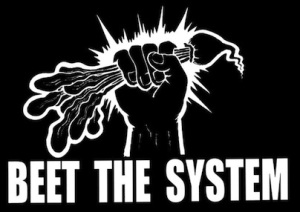 community is already hard at work on this! Mazon: A Jewish Response to Hunger not only provides grants to food banks across the country, but also encourages asking elected officials to prevent cuts to food stamps. Jews United for Justice, based in Washington, DC, is working to raise the minimum wage in Maryland. Bend the Arc: A Jewish Partnership for Justice is advocating for a tax fairness campaign in California and a nationwide minimum wage campaign for people in the caregiver profession. This brief overview doesn’t even include the many individuals within the Jewish community, such as Lisa Levy, Director of Policy, Advocacy, and Organizing at the
community is already hard at work on this! Mazon: A Jewish Response to Hunger not only provides grants to food banks across the country, but also encourages asking elected officials to prevent cuts to food stamps. Jews United for Justice, based in Washington, DC, is working to raise the minimum wage in Maryland. Bend the Arc: A Jewish Partnership for Justice is advocating for a tax fairness campaign in California and a nationwide minimum wage campaign for people in the caregiver profession. This brief overview doesn’t even include the many individuals within the Jewish community, such as Lisa Levy, Director of Policy, Advocacy, and Organizing at the  Picture: Showing off their new scrapbook siddur are White Meadow Temple members and clergy, from left, Stu Lefkowitz, Rabbi Benjamin Adler, cantorial and rabbinical student Hillary Chorny, Jeff Stellman, and congregation president Jules Resnick.
Picture: Showing off their new scrapbook siddur are White Meadow Temple members and clergy, from left, Stu Lefkowitz, Rabbi Benjamin Adler, cantorial and rabbinical student Hillary Chorny, Jeff Stellman, and congregation president Jules Resnick.



